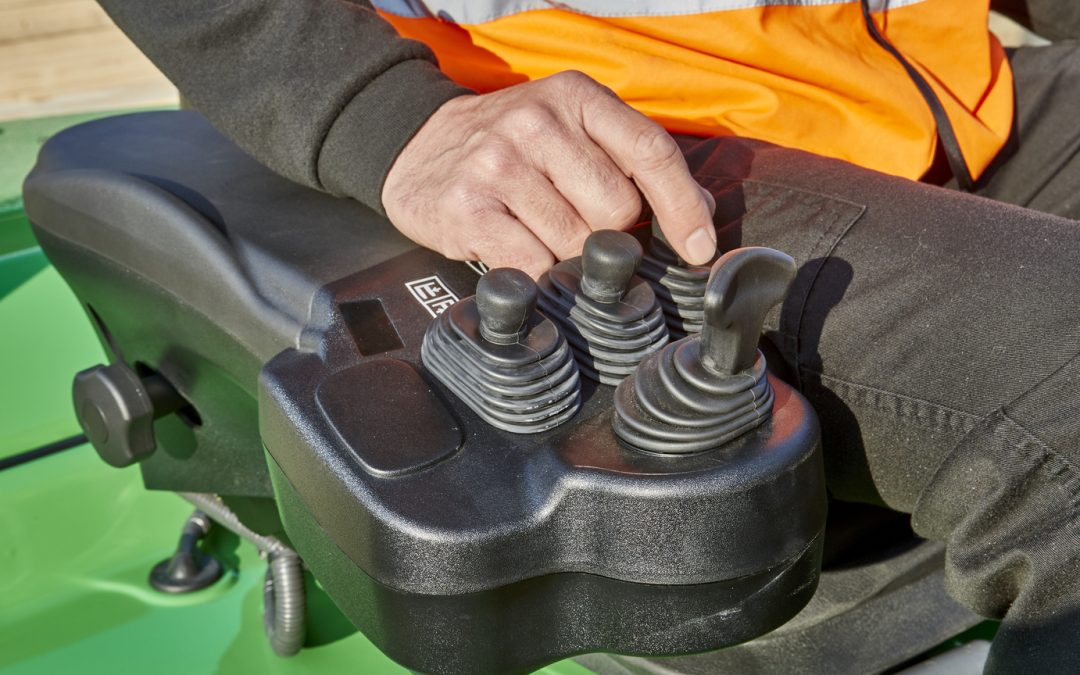Operating and managing a forklift truck requires consistent maintenance and inspection to ensure safety without jeopardising productivity or efficiency in the workplace. There are numerous potential points of failure on forklift trucks short and long term, which is why daily inspections and regular repair work is a necessary part of operating a forklift.
Not only does a robust inspection ensure on-site safety, but it keeps the fleet of forklift trucks in optimal condition for longer, as it catches any problems before they develop into serious faults. This article will look at what must be done daily before using a forklift to ensure it is safe to operate and in good condition moving forward.
Things to check daily before using a forklift
There are some checks that you should perform before you get into the forklift to ensure that no faults or problems have developed. Checking the engine oil levels is a good place to start because you will probably notice an oil puddle underneath the forklift if there is a problem. Oil levels should always be checked to make sure it is at an appropriate level, as this will optimise engine output and minimise issues such as wear and tear.
Another level to check before starting out on your pallet truck is fuel. Make sure it is well-filled to keep the catalytic converter running smoothly and prevent engine stalling as this will increase the lifespan of the engine block. Getting into the habit of checking and topping up fuel or oil levels can prevent minor damage and provide a more efficient engine output.
One last visual pre-inspection is to check all of the dials for warning messages. This includes things like brake indicators, lights and engine sensors. Making sure there are no warning messages can save time and ensure the forklift truck is safe to use.
Daily 10-point forklift truck inspection checklist
To ensure health and safety, as well as the longevity of your reach truck, we have created a 10-point checklist to help you inspect your forklift truck daily. Cover all 10 of these points and you should be ready to get to work in your forklift truck.
1 – Fuel and oil levels
If you are using a forklift truck, such as a long ‘counter balance’ forklift that uses fuel as opposed to an electric forklift truck, then you will need to check fuel and oil levels on a daily basis. Make sure they are topped up to ensure the longevity of your engine.
2 – Make sure lights are working
Headlights and rear lights are used to light up paths and notify others that you are in movement. Be sure to inspect all of the light bulbs and make sure none of them has stopped working. If a light has gone out, replace the bulb with a new one before setting off.
3 – Give your horn a blast
Testing your forklift truck horn is important as it is your main tool for alerting others that you are nearby. Test your horn before operating the forklift truck to make sure it works, as using a functional horn can reduce accidents in the workplace.
4 – Inspect your wheels
Give your tyres a kick to make sure that they are fully inflated. You should also give the treads of the tyres an inspection to make sure they aren’t bald. If they are damaged, worn or flat you will need to address this before operating the forklift truck.
5 – Check the steering wheel and column
A forklift’s steering wheel needs to be precise and fluid so that you can operate the forklift safely. Make sure that the steering wheel can move smoothly and that the alignment is accurate before departing.
6 – Inspect the forks of the truck
The forks of the forklift will no doubt be used on a daily basis to reach maximum lifting heights, so it is important to assess for any damage before using the forklift truck for the day. If there are any bends or noticeable damage to the forks, you will need to make repairs before using the forklift truck.
7 – Perform a brake check
The brakes on a forklift truck can stop an accident dead in its tracks – but only if they are in good working condition. Pump the brakes to make sure that they can be applied quickly and safely to your forklift truck.
8 – Adjust the seat position and mirrors to suit your needs
The seat position and mirrors of a forklift truck should always be adjusted to suit the driving position of the driver. So before starting up the forklift truck, adjust the position of the seat and mirrors so that you can access all controls and clearly see in all directions.
9 – Check your workwear
From wearing hi-visibility clothing to ensuring that no baggy material is exposed, the right workwear is important when operating a forklift truck. Sturdy footwear and protective equipment such as hard hats should also be worn, so give your gear a good inspection and make sure they are in good condition.
10 – Note capacity limits
All forklift trucks will have a known capacity limit that lets you know the maximum load the forklift can carry. Acquaint yourself with the limit on your forklift truck and ensure your loads do not go over this limit.
If you are looking for a reliable forklift for sales UK wide or for hire, contact our team at Pendle Forklift Services today. We are the number one forklift hire and sales company in Lancashire.

 01282 842 678
01282 842 678